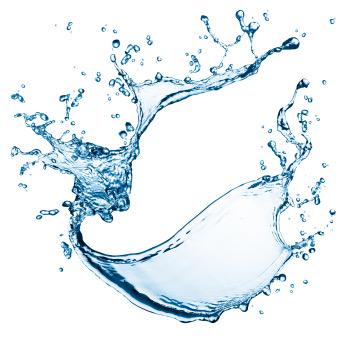A micro hydro system is an excellent method of generating renewable electricity for your home. It is efficient and reliable but you’ll need a suitable watercourse on your property or access to one nearby for it to be an option.

Micro Hydro System – How it Works
Micro hydro system designs vary considerably and are dependent on the characteristics of the site, the available watercourse and the power demand.
The two most important factors are the flow rate of the water course and the vertical fall or “head” through which the water travels. The more the better!
Simply, water is redirected from the watercourse via a settling tank and filters to remove debris, then through pipe work to a turbine and then back to the watercourse.
Small water turbines extract energy from water in much the same way as a wind turbine does from the air.
Kinetic energy from the flowing water is transferred to the turbine as it travels over the blades causing them to rotate. The mechanical energy created by turning the rotor is converted into electrical energy using a generator within the turbine.
The electricity generated can be used immediately, stored in batteries or fed back into the grid. It is generated as direct current (DC) which must be converted using an inverter into alternating current (AC) for use within your home.
Water turbines are an attractive option for electricity microgeneration as watercourses tend to provide a more constant and predictable flow than the wind and unlike photovoltaics, are unaffected by changes in light levels. They have proved to be a very efficient and reliable system of microgeneration.
Grid Connected
Unless you are building in a location without access to the grid or would prefer to remain ‘off-grid’, it is advisable to connect the system to the electricity grid.
Excess power generated can be exported to the grid and bought back by your energy supplier. Any shortfall in your own energy production can be supplemented by grid-supplied power . You could sign up to a green energy supplier to keep it green.
Costs
Costs vary considerably depending on location, characteristics and generating capacity and the Energy Saving Trust (2009) estimates that “a typical 5kW scheme suitable for an average home might cost £20,000 – £25,000 including installation.”
Financial Incentives
The 1st April 2010 saw the introduction of Feed-in Tariffs (FiTs) as an incentive for electricity microgeneration. Participating energy companies make payments for electricity fed into the grid by renewable microgenerators. Find out more about the scheme and the rates on the Ofgem website.
Many Local Authorities offer grants for microgeneration installation. Contact yours to find out if anything is available.
Design and Installation
If you are self building your own home then you are in an ideal position to investigate sustainable home construction, the incorporation of microgeneration systems and to integrate everything seamlessly at the design phase. As always, discuss the options with your designer and consider appointing specialist consultants.
Contact a Microgeneration Certification Scheme MCS certified and British Hydropower Association member suppliers and installers for an assessment, design advice and estimates.
Planning Permission
Contact your local authority about planning requirements for your site specific micro hydro system design.
More Information
For more information on micro hydro power, visit:
- The Energy Saving Trust.
- The British Hydropower Association (BHA) – represents the interests of all those involved in the UK hydropower industry.
- The Microgeneration Certification Scheme – For certified manufacturers and installers.
Don’t forget to return to our eco homes section for other ways to make your home more sustainable and have a look through the rest of The Self Build Guide for more information on building your own home.
Return to Eco Homes
Return to Home Page from Micro Hydro System
